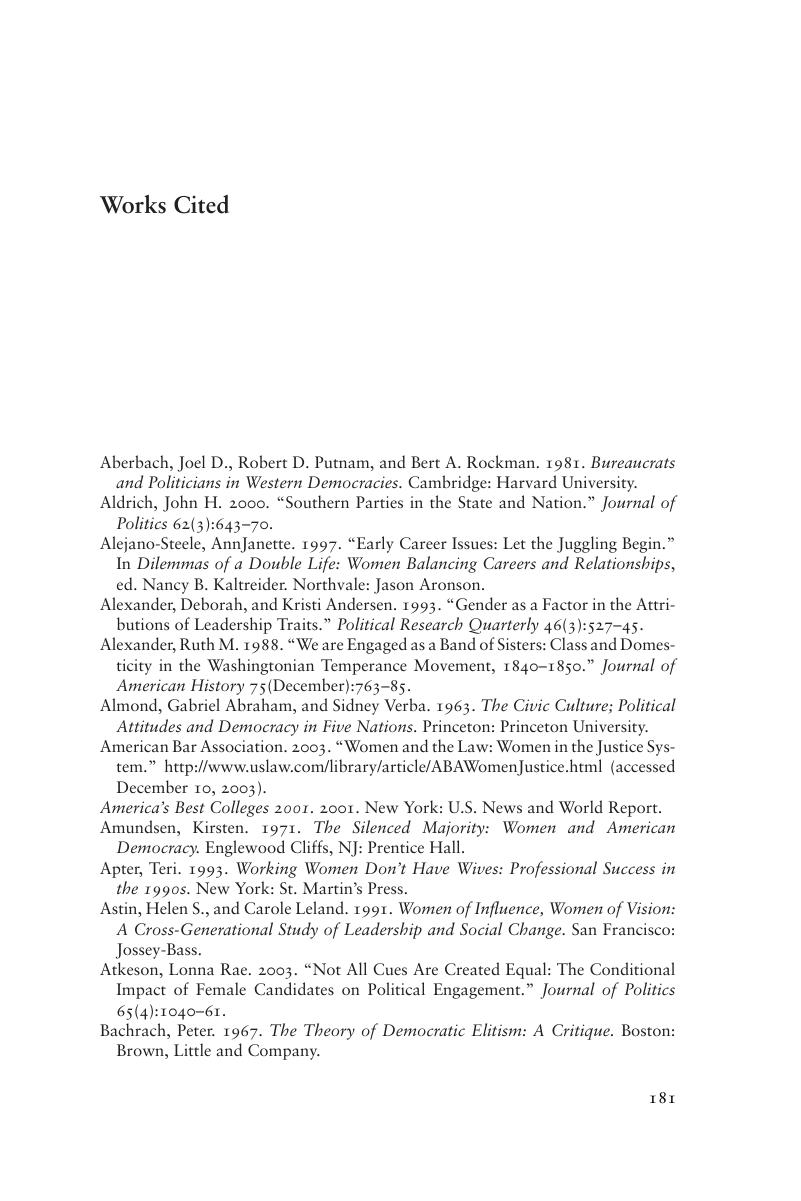Book contents
- Frontmatter
- Contents
- List of Tables
- List of Figures
- Acknowledgments
- 1 Electoral Politics: Still a Man's World?
- 2 Explaining Women's Emergence in the Political Arena
- 3 The Gender Gap in Political Ambition
- 4 Barefoot, Pregnant, and Holding a Law Degree: Family Dynamics and Running for Office
- 5 Gender, Party, and Political Recruitment
- 6 “I'm Just Not Qualified”: Gendered Self-Perceptions of Candidate Viability
- 7 Taking the Plunge: Deciding to Run for Office
- 8 Gender and the Future of Electoral Politics
- Appendix A The Citizen Political Ambition Study Sample Design and Data Collection
- Appendix B The Survey
- Appendix C The Interview Questionnaire
- Appendix D Variable Coding
- Works Cited
- Index
- References
Works Cited
Published online by Cambridge University Press: 05 September 2012
- Frontmatter
- Contents
- List of Tables
- List of Figures
- Acknowledgments
- 1 Electoral Politics: Still a Man's World?
- 2 Explaining Women's Emergence in the Political Arena
- 3 The Gender Gap in Political Ambition
- 4 Barefoot, Pregnant, and Holding a Law Degree: Family Dynamics and Running for Office
- 5 Gender, Party, and Political Recruitment
- 6 “I'm Just Not Qualified”: Gendered Self-Perceptions of Candidate Viability
- 7 Taking the Plunge: Deciding to Run for Office
- 8 Gender and the Future of Electoral Politics
- Appendix A The Citizen Political Ambition Study Sample Design and Data Collection
- Appendix B The Survey
- Appendix C The Interview Questionnaire
- Appendix D Variable Coding
- Works Cited
- Index
- References
Summary

- Type
- Chapter
- Information
- It Takes a CandidateWhy Women Don't Run for Office, pp. 181 - 194Publisher: Cambridge University PressPrint publication year: 2005



